Equine sleeping patterns differ from those of other animals and humans. Unlike human sleep, which is a single stretch of about eight hours a day, horses take shorter naps. Such periods include short day lie-downs and a few deep sleeps during the night.
Also, how much a horse sleeps depends on its age. Young foals, for example, take frequent naps until they reach three months. Adult horses prefer standing up rather than lying down. Older equines are more likely to rest flat instead of dozing off while standing.
Keep reading to gain valuable insight into your horse’s sleeping scheme.
How Does A Horse Sleep?
Mature equines can rest while standing, though this position deprives them of REM or deep sleep. Hence, a horse must relax all skeletal muscles to achieve tight sleep. No such thing can happen when the animal is up on its feet.
If horses fall asleep while standing, the stay apparatus in the hind limbs gets activated. You may wonder what this mechanism is and how an animal can nap in a vertical position. Everything started a long time when wild horses roamed vast plains in herds.
As prey animals, equines were frequent targets of predators looking for abundant and delicious meat. Thus, horses developed the so-called stay apparatus, enabling them to remain alert and wake up quickly. Thanks to their unique anatomy, various equine species have survived for millennia.
The mechanism consists of tendons, ligaments, and muscles. Working together in harmony, they allow animals to doze without collapsing. The process starts when knee caps in horses get displaced and lock hind legs in a standing position. Once the joints get secured, the horse can nap and relax its muscles.
As painful as it may sound, this causes no issues for horses. Plus, the apparatus will work in one hind limb only, while the front and the second rear leg remain relaxed. After some time, the horse will change its legs until fully rested. To many, an upright resting horse may seem as if it is leaning.
Equines will only lie flat when in a deep sleep. REM sleep typically happens several times at night. More so, a horse will only fall asleep while lying down when provided with comfortable and safe surroundings. Hence, it’s vital to arrange a dry shelter (a stall or shed) and allow your horse to stretch out peacefully.
Length Of Sleep
Healthy foals tend to sleep frequently because they are very active when awake. As a result, foals can spend half of the day to offset the energy lost. Hence, owners must provide space for their foals to lie down and rest for prolonged periods.
As for adult horses, they need far less sleep. They require two to five hours per day to get enough rest. Though most of this time will be in slow-wave dozing, horses also experience REM or Rapid Eye Movement sleep. For this type, equines must lie down.
The actual deep sleep will occur at night. Equines need at least 30 minutes and a maximum of three hours in 24 hours to meet their deep sleep needs. Besides, they must lie down for up to 45 minutes to fall into 20-minute REM sleep at a time.
Generally, sleep type and length depend on the workload, diet, temperature, and gender. Plus, the older the horse gets, the more often it will need to doze off to get refreshed.
Sleeping Positions Explained
Claiming that horses sleep with their feet on the ground is only part of the riddle. We will explain both sleep phases equines experience daily to get enough rest.
1. Standing Up
Like humans, horses experience different sleeping cycles. The first type involves napping, often referred to as Slow Wave Sleep. The second type is REM sleep or Rapid Eye Movement. In this phase, horses can dream, and waking up takes longer.
Slow Wave Sleep happens while the horse is standing. Thanks to the unique skeletal system that we’ve discussed above, horses can hold themselves upright without burdening the muscles.
2. Laying Down
No horse can achieve deep sleep when standing since the body must remain entirely relaxed. That’s why the stay apparatus can’t provide enough relaxation and is only a part of the process. Moreover, in REM sleep, horses lose muscle function control.
Also, it’s not uncommon for equines to move and jerk awake while sleeping. Most owners agree that horses typically sleep best after midnight and when it’s complete darkness.
The reason why REM sleep happens in brief 20-minute bursts is due to equine anatomy. As a result of their size, blood flow can’t reach all vital organs if the horse is lying down. Hence, a healthy horse can’t remain flat for over 45 minutes. It must get up, stretch, and take another round of sleep later.
3. Sleeping Habits
In hot weather, horses prefer to lie down and bask in the sun. So, it might appear as if they are lazy when it’s scorching outside. Watching horses take frequent naps under shady areas isn’t a rare sight either. In snowy and windy conditions, horses spend fewer hours lying down.
You can often spot that a couple of horses remain standing while the herd is resting. This natural behavior has roots in the past. A few horses always had to stay alert to guard the others against predators in the wild.
How Can You Know If A Horse Is Sleeping?
Equines stretch flat when sleeping deeply, so you can’t misinterpret it for something else. You might often realize that your horse has dreams if its legs start to twitch.
Conversely, a dozing horse can be more challenging to spot but not impossible. In this case, the animal will transfer its body weight on both forelegs and one rear limb. The other leg will rest and remain slightly raised with the hoof tip touching the ground.
Most often, the neck and the head will bend downwards. The ears will remain relaxed. Your horse will also close its eyes and twitch or droop its lower lip. Finally, if you get the impression that the animal is leaning on its hip, it is probably napping.
Why Is Deep Sleep Essential?
Though partly resting while standing, horses must lie down to get sufficient desynchronized sleep. Frequent bouts of deep sleep are vital for the equine nervous system and learning new things. REM sleep also helps horses stay calm, focused and create memories.
Solid rest will boost the horse’s wellbeing and impact their overall performance. Hence, taking proper care and ensuring your equine friend gets enough sleep is essential. Above all, owners must always provide safe surroundings for horses to rest.
They should also check whether the stall is too noisy, cold, or hot and eliminate typical stressors. Other reasons why a horse might not sleep enough include isolation and confined spaces. Unfamiliar and unsafe territory can also prevent your horse from resting well.
Consequences Of Sleep Deprivation
Lack of sleep will distort equine eating patterns, physical shape, and overall performance. A sleep-deprived horse will soon become weak, heavy-eyed, and unable to control its body temperature. Although the animal might consume more food than usual, it can still lose weight.
When horses suffer from sleep deprivation, you will likely spot the negative impact a couple of days later. Tired horses will become restless, irritable, and bad-tempered. Even worse, a sleep-deprived horse can attack and pose a danger to humans and other animals around.
In several cases, horses with sleeping disorders have collapsed during show and major equestrian events. Sudden collapses can also occur due to joint or muscle problems. The most frequent injuries in equines are bone trauma, ligament, or tendon injury.
Finally, not having adequate room to lie flat and stretch will prevent the horse from getting REM sleep. As a result, the animal will feel extreme drowsiness. Horses that suffer from sleep disorders can often wake up at night and display excessive movements.
Another severe sleep deficit condition in equines is narcolepsy. Though rare, this disease is incurable and affects the central nervous system. As a result, an alert horse can have sudden sleep attacks and muscle tone loss. Hypersomnia is another grave condition in equines and involves excessive sleep.
Final Thoughts
Equines possess a unique ability to rest while standing up. However, they also need to lie down to have a proper sleep. The fact that horses can doze in two different positions confuses many people. Hopefully, this article debunked some myths about horse sleeping patterns.
What is your insight on the topic? Have you ever been perplexed after seeing a horse sleeping with three limbs on and one leg off? Or you’re well aware of this behavior and can add a few details to our long list? Please, share your horse’s resting routine in the comment box below.
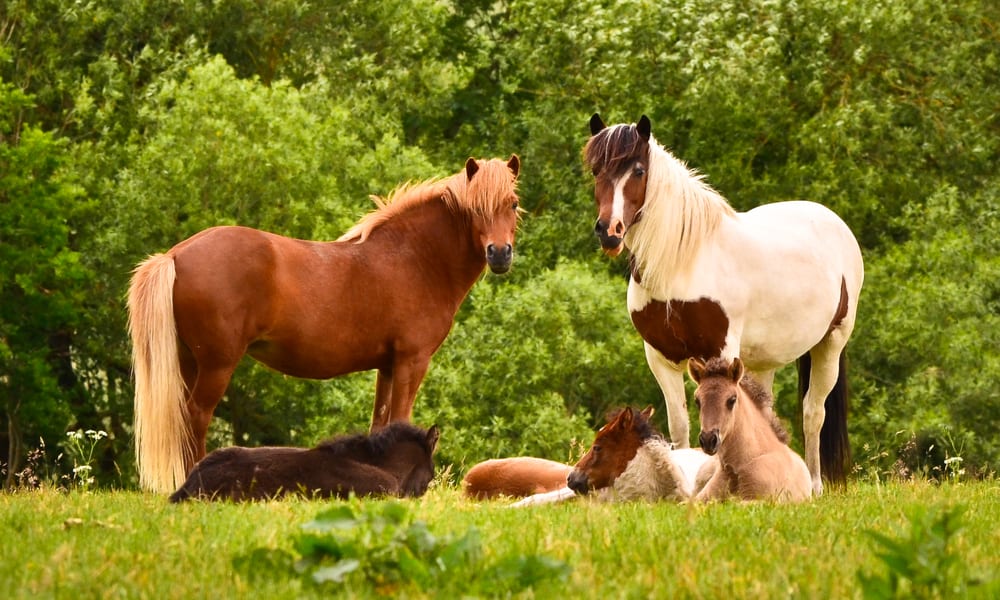
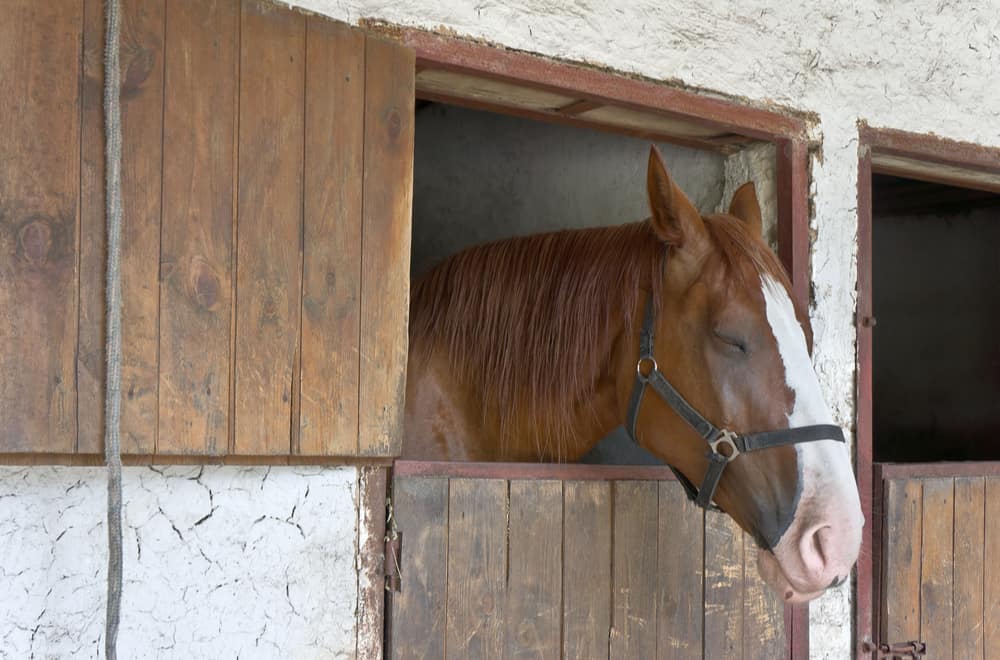
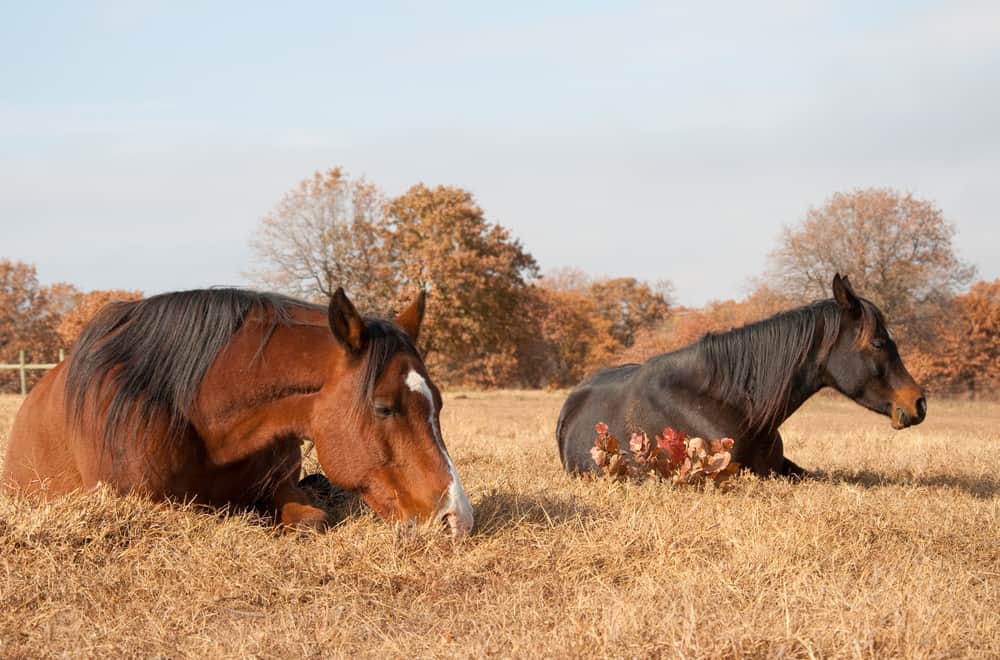
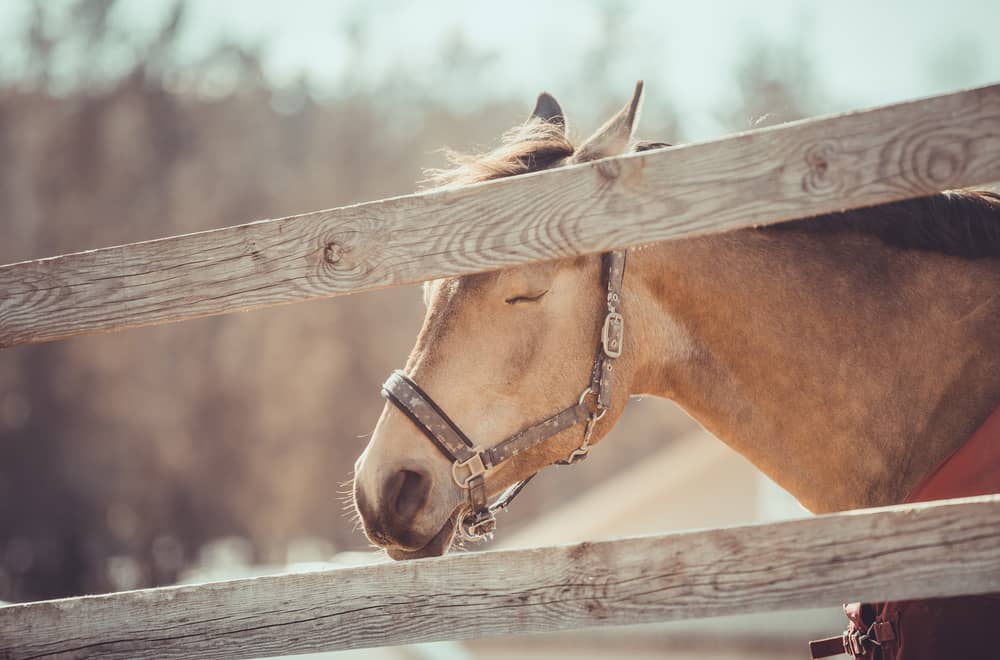
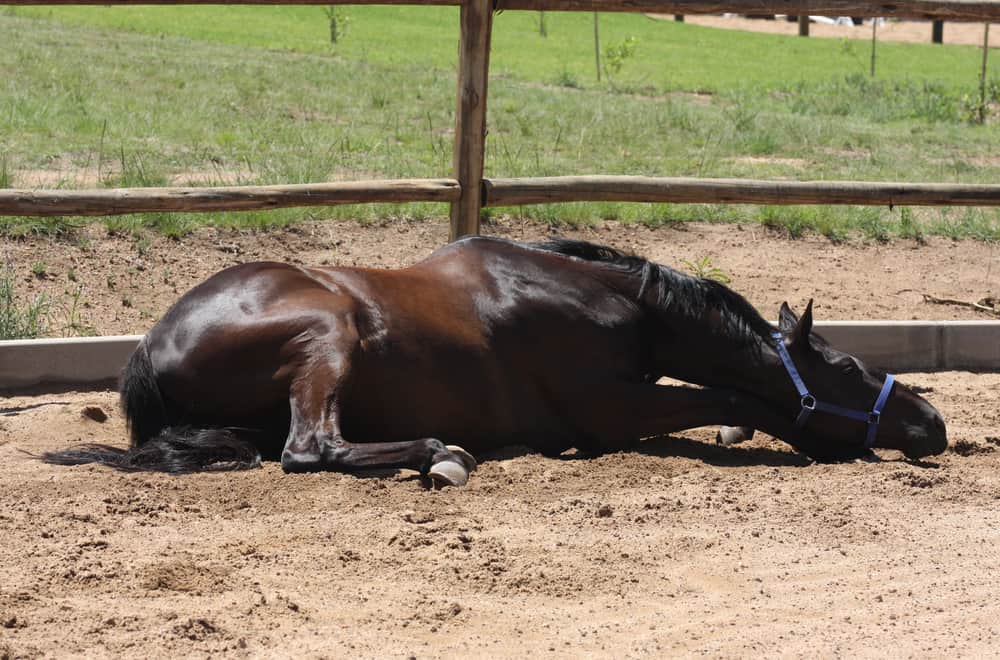
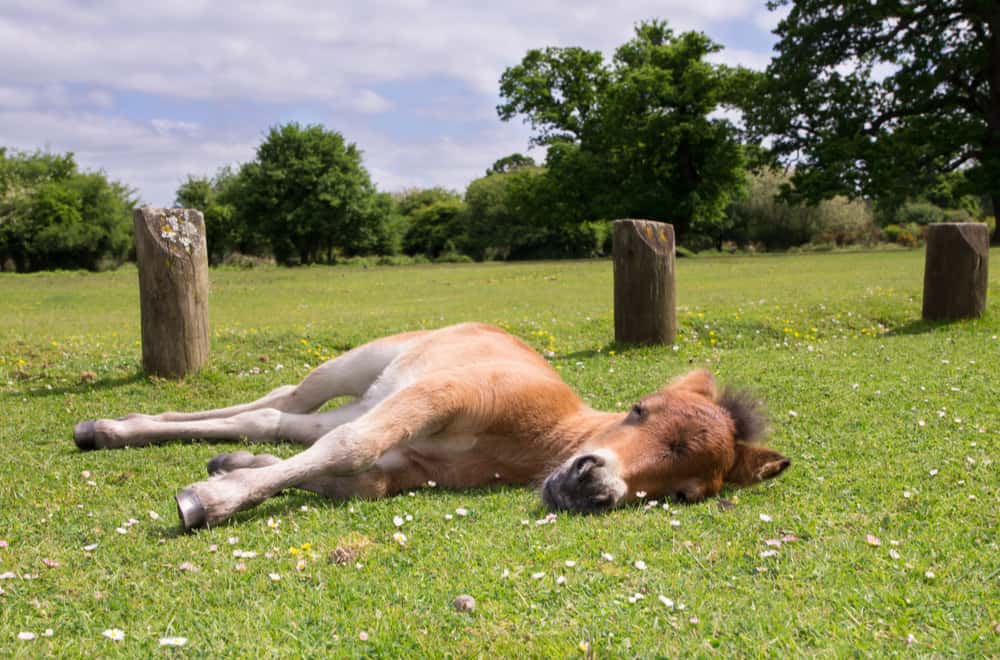








We were amazed at the horses. I love to ride horses but I don’t know the interesting things behind them. Thank you for this great and useful post!
As a horse lover, I like how detailed this post is. Great effort!
Great article. I love something amazing about horse